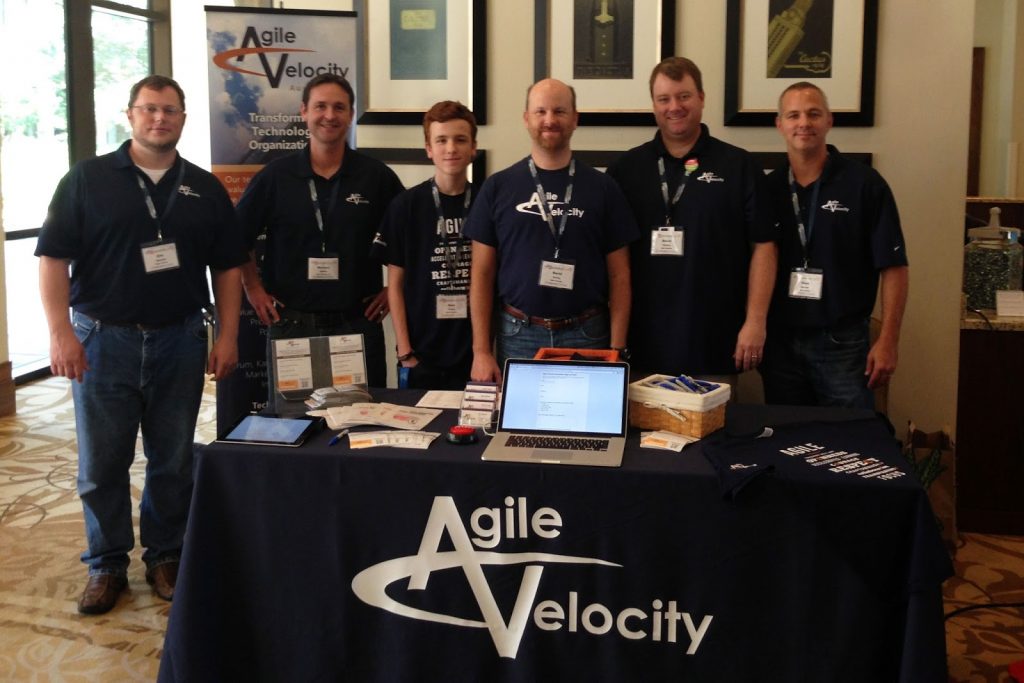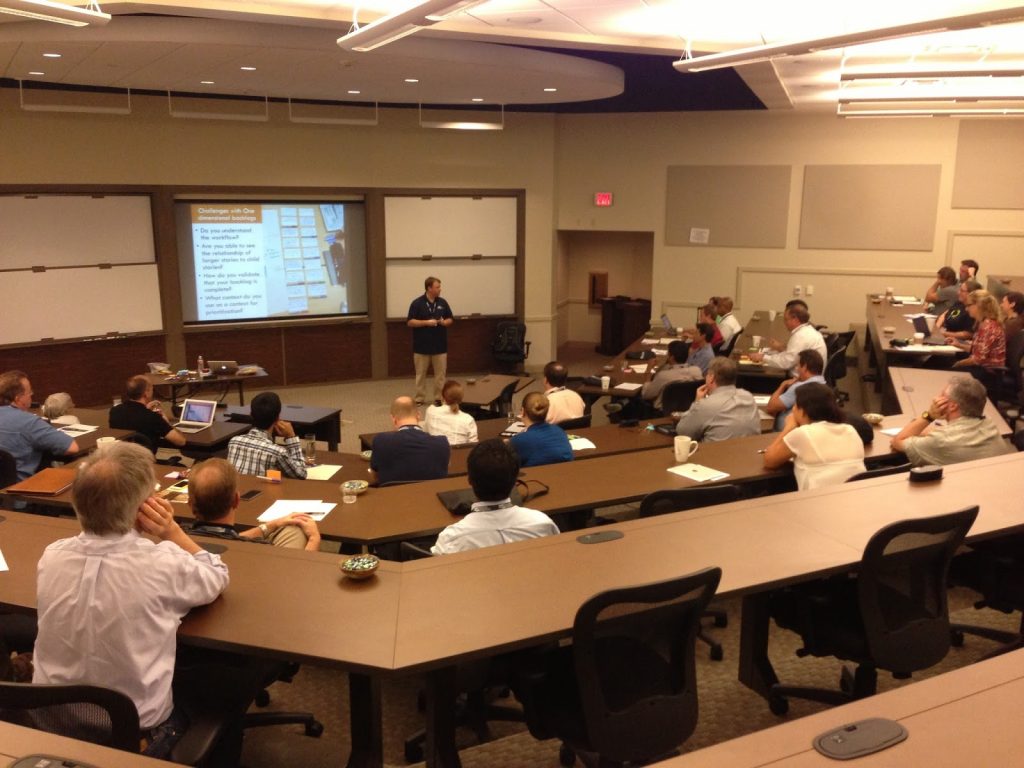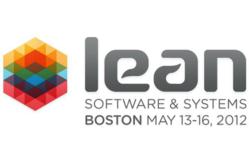 I feel the Retrospective is the most important ceremony, especially for new teams. I am concerned when ScrumMasters boast they can get their Retrospective done in 30 minutes or less. I must ask, “Did your team learn anything? Are they improving? Are they pushing themselves through the Tuckman Model and getting close to becoming a High Performing Team?”
I feel the Retrospective is the most important ceremony, especially for new teams. I am concerned when ScrumMasters boast they can get their Retrospective done in 30 minutes or less. I must ask, “Did your team learn anything? Are they improving? Are they pushing themselves through the Tuckman Model and getting close to becoming a High Performing Team?”
In my experience, new teams need 1.5 – 2 hours for a healthy retrospective. They need time to reflect on the Sprint and fully explore opportunities for improvement. The retrospective is a key ingredient in engaging teams to take ownership of their own process and figuring out how to improve. In this post, I will walk through my standard approach to a Retrospective.
Goal of Retrospectives
It is easy for the team to identify a laundry list of problems, but the team can’t address more than a couple at a time. The goal is to devise 1-3 actionable items the team can change during the next Sprint timeframe. If the team can make a 2% average improvement every two weeks, they would accomplish over 50% improvement on the year. In order to encourage more significant improvements, we also need to help the team have the courage to try some more radical changes.
Set the Tone
When I kick off a retrospective, I want to make sure it is a safe room for the Team. This includes the team members (Pigs), ScrumMaster and Product Owner, but does not include chickens, stakeholders or managers. We also want to defuse negativity. I usually kick things off with a statement like the following:
“We are looking for changes that we the team can change. This is not a blamestorming session (I usually point with my fingers outside the room), this is a chance for us to reflect on what we (pointing at myself) can do better as a team.”
I might also put the Norm Kerth quote up if I think there might be some attacking of individuals:
“Regardless of what we discover, we understand and truly believe that everyone did the best job they could, given what they knew at the time, their skills and abilities, the resources available, and the situation at hand.”
When setting the tone, I also like to share our current metrics. Things like:
- The Sprint Burndown
- Sprint Results (Points planned vs. completed)
- Release Burnup to show progress on overall goal
This helps the team review some of the facts around their performance and effectiveness.
Data Collection
The next thing to do is gather some data and insights on the Sprint. The standard way to do this is Start, Stop, Continue. I create three sections on the wall or whiteboard with those titles and have the team come up with as many items as they can in 5-10 minutes. We are looking for:
- Things that worked well and the team should Continue
- Things that did not work well and the team should Stop
- Things that the team did not do and should Start
This exercise should be silent with folks writing individually. This tends to prevent a couple voices from dominating the discussion and get the introverts to participate a little bit more. We want to give the team members time to reflect to themselves on opportunities for improvement and reinforcement.
They should all be writing at the same time with provided Sharpies and Post-it notes. They should write one item per Post-it, which can be put on the wall anytime. Sometimes, the early ones will help others generate ideas, but this is all done silently. The Sharpies are important so that everyone in the room can see what is written on the Post-it. Once I see that no new ideas are being generated, I move on to the next step.
Read for Clarity
I introduce this step by saying:
“Now we want to read through the items to get an understanding of what everyone has written. On this first pass, we just want clarity so we don’t want to get into discussion or debate. If you are unclear of the meaning of what someone wrote, just ask and that person can provide a brief description of their intent and then we will move on to the next item.
Now, who can come up and read one of the columns?”
I have volunteers from the team read the items to foster ownership by the team. As the facilitator, make sure the volunteer is reading slowly enough so participants have enough time to digest. If after a couple have been read and no one has asked to clarify, I typically will ask for one to be clarified so people recognize it is ok to interrupt. Once they have finished one column, I thank them and ask for another volunteer until all three columns are read.
Group and Theme
In the next phase, we will organize what we have to determine where to focus our discussion because there is rarely time to discuss everything. I ask everyone or for large teams everyone who did not volunteer to read a column, to stand up and go to the board. At the board, we want everyone to do a silent sort (for speed). They should put like items near each other (without covering up the others). At this stage, it is ok for items to move across columns. Once they have a grouping, they should label the themes. It is ok to have a couple oddballs that don’t fit into the groups.
Prioritize
If you have 3 or less core themes, focus on those and start with the one with the most items. If you have more, then you need to prioritize. I like to use dot voting. I give each person 3 dots (Stickers) and ask them to vote on the topics they think are the most important to tackle. They can put all three on one item or spread them across multiple. They are voting for a theme not individual items. (Hint: ask them to place them on the Post-it as it is much more difficult to peel them off of the whiteboard or wall.)
Discuss
Based on the voting pick the top 3 items and set a timebox of about 15 minutes per item. Ask an open-ended question on the topic and then let the team own the discussion. (i.e. “So what do you guys see as the underlying problem here?”) As the facilitator, try and refrain from leading this discussion. We want the team to drive it and it is ok for the discussion to wander a bit. After 5-10 minutes, try and bring it to a close with something actionable the team can change. Prompt them into solutioning by asking something like, “So what can we as a team do about this?”
Take Action
Make sure the team comes up with actionable changes, i.e. SMART goals. Ensure the team discusses how they are going to make it happen. Create immediate tasks in the Sprint Planning session that should follow. Make the goals visible and part of the plan, i.e. put them on the task board.
Other Variations
- Don’t let it get stale. Try different things. I recommend buying Esther Derby’s book (listed below) to help generate new ideas to keep your team engaged.
- Other favorites: Speed Boat (Innovation Games), Triple Nickles (Esther), Mad/ Sad/ Glad (Esther)
- Sometimes just have a conversation as a team
- Occasionally just focus on a team-building exercise
- The problems aren’t always clear and you will need to do some root cause analysis. Some great tools for that are a Fishbone and the Five Why’s.
- It is ok for the ScrumMaster to set a focus topic of the retro. i.e. Let’s focus on self-organization or being releasable at the end of the sprint
- For Release Retrospectives I like to do the Timeline (Esther) exercise or Remember the Future (Innovation Games)
References
- Agile Retrospectives: Making Good Teams Great, Esther Derby & Diana Larsen
- http://innovationgames.com/


 AUSTIN, TEXAS – August 3, 2015 – Agile Velocity, a Texas-based provider of Agile services, including Agile transformations, assessments, training, coaching and recruiting, announced today that it has been experiencing ongoing company growth, evidenced by rising revenue. To support the increasing demand for services, Agile Velocity has added a new key hire to their expanding team.
AUSTIN, TEXAS – August 3, 2015 – Agile Velocity, a Texas-based provider of Agile services, including Agile transformations, assessments, training, coaching and recruiting, announced today that it has been experiencing ongoing company growth, evidenced by rising revenue. To support the increasing demand for services, Agile Velocity has added a new key hire to their expanding team.

 The Agile Velocity team recently attended and participated in Austin Product Camp 11 on July 20th at the AT&T Conference Center. They were happy to see familiar faces and meet new ones while being a part of this fun event.
The Agile Velocity team recently attended and participated in Austin Product Camp 11 on July 20th at the AT&T Conference Center. They were happy to see familiar faces and meet new ones while being a part of this fun event.

 “Many Companies are Drowning in a Sea of Opportunity.” Ken Rubin made that statement at a conference I attended and it resonated with me. This is probably one of the top three issues many companies face — they try to do more than their capacity allows and it perpetuates the problem.
“Many Companies are Drowning in a Sea of Opportunity.” Ken Rubin made that statement at a conference I attended and it resonated with me. This is probably one of the top three issues many companies face — they try to do more than their capacity allows and it perpetuates the problem.
 The word “team” in Agile Team is hugely important and something we rarely give much thought to. I recently browsed the web to discover and define what really makes a good team player. Part of my personal journey is to improve as a member of my team. I look to these words for inspiration.
The word “team” in Agile Team is hugely important and something we rarely give much thought to. I recently browsed the web to discover and define what really makes a good team player. Part of my personal journey is to improve as a member of my team. I look to these words for inspiration. I just returned from the Lean Software and Systems conference in Boston. There was a definite common thread around learning cultures and a focus on treating our industry as a set of scientific experiments. The heavy influence from the Lean Startup movement was prevalent. Here are some of my takeaways for those that were not able to attend.
I just returned from the Lean Software and Systems conference in Boston. There was a definite common thread around learning cultures and a focus on treating our industry as a set of scientific experiments. The heavy influence from the Lean Startup movement was prevalent. Here are some of my takeaways for those that were not able to attend.
 I feel the Retrospective is the most important ceremony, especially for new teams. I am concerned when ScrumMasters boast they can get their Retrospective done in 30 minutes or less. I must ask, “Did your team learn anything? Are they improving? Are they pushing themselves through the
I feel the Retrospective is the most important ceremony, especially for new teams. I am concerned when ScrumMasters boast they can get their Retrospective done in 30 minutes or less. I must ask, “Did your team learn anything? Are they improving? Are they pushing themselves through the  Kanban vs. Scrum – Which is Right for my Team?
Kanban vs. Scrum – Which is Right for my Team?